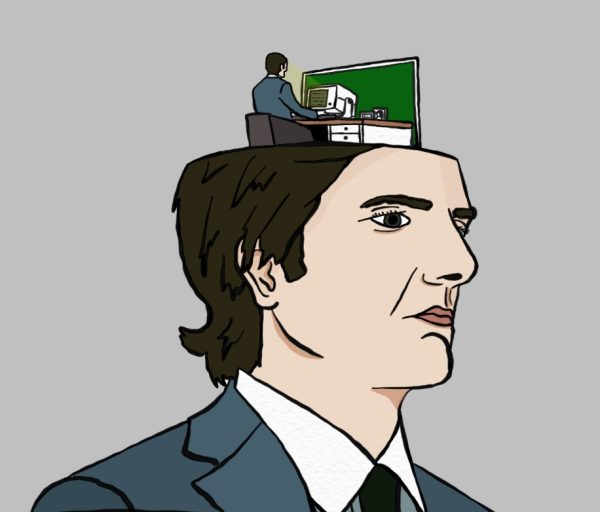Recap: “The Curious Incident of the Dog in the Nighttime”
Christopher, played by Dillon Lopez (center), held up by his fellow castmates during the production.
Fairy lights shimmered against a dark backdrop on the stage of the CHS Theatre on Feb. 27, 28, and 29. As the lights dimmed, the CHS production of “The Curious Incident of the Dog in the Nighttime” began to unfold. The play was brilliantly and believably acted by its four leads: Dillon Lopez, Shawn Clayton, Lucie Higuera, and Grace Rhodes. Lopez plays the main character, Christopher, a 15-year-old boy with a developmental disability. He is accompanied by his father (played by Clayton), his absent mother (portrayed by Higuera), and his supportive teacher and narrator (depicted by Rhodes).
The play begins with the unexplained killing of a neighbor’s dog. This murder mystery becomes the focal point of Christopher’s motivation as he becomes determined to solve it. In the process, the play beautifully depicts Christopher’s unique way of perceiving the world as he steps out of his comfort zone, interacting with strangers and having to process some harsh realities about his family. The play explores the relationships between Christopher and the people around him, giving the viewer a glimpse into how the world looks and feels for this 15-year-old.
The actors really brought out the emotional interactions between the characters throughout the play. Early on, in the first interaction between Christopher and his father, the two lightly touch hands, which is all the physical contact Christopher can tolerate. This is an effective dramatization of how cut off he is from the people around him as he shrieks and jumps away when touched by anyone else. In one deeply emotional scene between Christopher and his father, Clayton embodies the father’s sadness as he makes a terrible confession, and then is unable to console Christopher, who has collapsed on the stage, crying. After asking for forgiveness, he reaches out his hand to his son, who refuses to return the gesture. As Clayton turned and walked away, the audience spontaneously broke into applause. Another powerful moment comes when Christopher is alone in the train station where he is met with a barrage of lights and sounds that leave him collapsed on the floor. This is portrayed rather artfully in the play by a group of actors walking across the stage, saying station stops and directions with colorful lights moving throughout the background, all culminating into a powerful and accurate depiction of a noisy and overwhelming station.
While the play explored deep themes about relationships and trust, it was also full of inspiring and humorous moments. For example, at the end of the show Christopher dramatically explains how he solved a hard math problem and the rest of the cast throws confetti when he gets the answer. Perhaps the play’s inspirational message is best summed up by the final dialogue between Christopher and his teacher in which he asks: “Can I do anything, can I do anything?” While this question is left unanswered in the play, the powerful performances put on by these actors proves that, yes, they can do anything.
Hello there! Our goal is to provide relavent, engaging journalism for readers of all ages. Your donation will support the student journalists of the Wolfpacket at Claremont High School, and will allow us to purchase equipment, print our monthly issues, and enter in journalism competitions. We appreciate your consideration!

Meghan Mason is a senior at CHS, and this is her third year on the Wolfpacket staff. Mason is the Assistant Editor-in-Chief this year, and cannot believe...

Kay Oken has been on the staff of the Wolfpacket since their freshman year. Over the years, they have been a reporter, photographer, Photo Editor, and...












